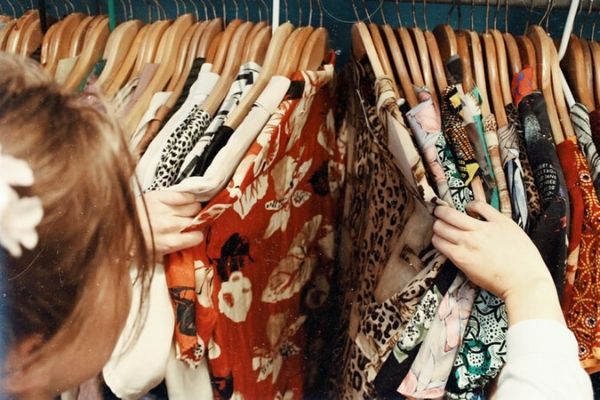Insights
INSIGHTS
All Topics
My Account
Is Depop the next step for the digital charity shop?
24 Jul 2020by Zoe Ruibal-Buxton
With so many charities now selling on e-commerce platforms, is Depop the next digital stepping-stone for the online charity shop?
The British charity shop is a staple to many local high streets across the country. According to the Charity Retail Association, there are an estimated 11,200 of them across the UK, raking in over £295 million for charitable causes every year.
But you only have to look at recent news to see that fewer and fewer people are hitting the high street - with more people than ever shopping online. Charities themselves are rapidly becoming more digital, moving their services and operations online and embracing the new technology available. The charity shop should be no exception to this.
What is Depop and why should charities be using it?
We’ve spoken about the huge fundraising benefits of digitising the charity shop. In recent years, there’s been a massive increase in charities using third party e-commerce and auction platforms, such as eBay, to sell the many donations they receive. However, one incredibly popular app seems to have largely slipped through the net of charity e-commerce platforms: Depop.
Founded in 2011, Depop is a digital marketplace where you can buy and sell clothes. Sellers can list their items on their Depop shop for set prices and buyers can easily purchase items through a smooth and simple interface. The layout of the app looks much like Instagram, with users being able to ‘follow’ certain shops and ‘like’ certain items. Depop has over 15 million users worldwide and is particularly popular in the UK, where it was founded.
The key to Depop is understanding what sells and understanding what the overwhelmingly Generation Z audience wants. Depop is very much about brands and popular clothing, most users are either on there to find rare, unique pieces or just to grab a bargain on the latest trend. There is a particular focus on vintage secondhand pieces.
Charity shops are inundated with donations and stock, so there is sure to be items they can sell on Depop. When sorting through donations, charity shops regularly keep an eye out for particularly valuable or sellable pieces, so why not put some of these on Depop and try the platform out? Opening an account is free. Sellers then pay a 10% fee on each item they sell.
When scrolling through the ‘explore’ section of the app, it is easy to see the kind of items that are popular, you can even take a look at what items other sellers have liked and gauge it from there. Keep a look out when next sort through donations for similar pieces.
Engaging a younger audience
According to Depop, 90% of their users are aged 16-24. In the UK alone, one third of this demographic are registered on the app. The app has gained enormous popularity in recent years, offering a place where buyers can pick up unique clothing that they would usually go looking for in a charity or vintage shop.
Selling some of your charity shop’s stock on Depop is a great way to align your cause with a younger audience and engage them via a platform that most charities aren’t using. It can also be a really good way to sell charity merchandise, for example hoodies, t-shirts or bags, to a more engaged audience who are looking for more individual items.
There are many young sellers on Depop who are making a living off the app. Occasionally sellers sell items for a cause or offer to donate a percentage of their profits to charity. Although this isn’t commonplace, it’s still a great option for charities to collaborate on the app.
Curating your content and knowing what sells
Although on some other e-commerce platforms you can sell pretty much anything, on Depop it’s best to stick to adult clothing and accessories. You’re unlikely to have much success selling things like baby clothes, books or household objects.
Most users of the app are looking for a more curated buying experience. This may sound daunting, but it really isn’t. Any charity looking to start a Depop shop should just make sure they have good pictures of the clothing that are visually appealing, taken in good lighting with a plain background. Buyers want to know what it is they’re actually buying. The higher quality your pictures, the higher chance you have of making a sale.
In the description, make sure to be as precise as possible about the details of the clothing- particularly if the item is from a popular brand or designer. Buyers want to know these things and it will save them having to message you privately and ask.
People love charity shops for the bargain prices they can find there. Your Depop pricing shouldn’t be any different. Some Depop sellers do often bump up their prices just because something is considered the latest trend, which can be annoying. Keeping pricing fair and reasonable is the best way to attract buyers and keep them coming back.
As mentioned, keeping a keen eye out while sorting donations for good brands, unique items or fashionable vintage pieces is sure to help you build up a great profile filled with popular items.
Depop is a great app for buying and selling clothing and it seems that so many charities are yet to try it out. Continue on your charity shop’s digital journey and take the step onto Depop!
07 Mar 2025by Ioan Marc Jones
A-Z incredible fundraising ideas for charity
07 Mar 2025by Ioan Marc Jones
An A-Z glossary of service delivery terms and definitions
Our Events
Charity Digital Academy
Our courses aim, in just three hours, to enhance soft skills and hard skills, boost your knowledge of finance and artificial intelligence, and supercharge your digital capabilities. Check out some of the incredible options by clicking here.


















